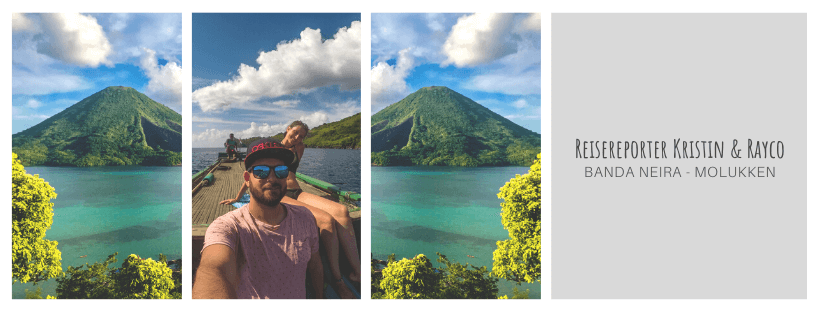Today we have another treat for you, this time it’s the Indonesian Moluccas. Never heard of them before? Don’t worry, Kristin and Rayco tell you about their trip to the 12,366-kilometer-away archipelago in today’s Reisereporter report. The main island, Banda Neira, is just 3.3 kilometers long and 1.3 kilometers wide. Sounds pretty tiny, right? These two will surely convince you that there is still an incredible amount to experience here and in the surrounding area. Have fun browsing and trying them out!
You might also be interested in these reports:
- Journey through the Atacama Desert
- The most beautiful highlights in Tasmania
- Alaska round trip & Highlights
- Round trip through North Macedonia
- Tonga in the South Pacific
- Cool round trip Cornwall and Devon
- My beautiful Maldives trip
- On your own through Botswana
- Round trip through Myanmar
- Top Highlights on Nusa Penida
- These reports might also interest you:
- About Banda Neira
- Starting on the island of Ambon
- Highlights on Ambon
- The ferry ride to Banda Neira
- Arriving on Banda Neira
- The Bandas – Then
- The Bandas – Today
- Untouched underwater world
- Best time to go diving
- Our dive center Dive Bluemotion
- Excursions and tours
- Accommodation on Banda Neira
- Arriving in Banda Neira
About Banda Neira
Banda Neira, or also called the Bandas, is a tiny archipelago between Sulawesi and Papua, invisible to the naked eye on a map. The seven tropical islands belong to the Moluccas, which are widely scattered islands divided into two provinces. The Bandas lie in the deep Banda Sea and, in the past, caught the attention of Europeans because of their spices; more on that later. The Moluccas are still relatively unknown, and this remote archipelago even more so. This is probably also because they can only be reached by a long, sometimes arduous journey. Things like this really make our eyes light up.
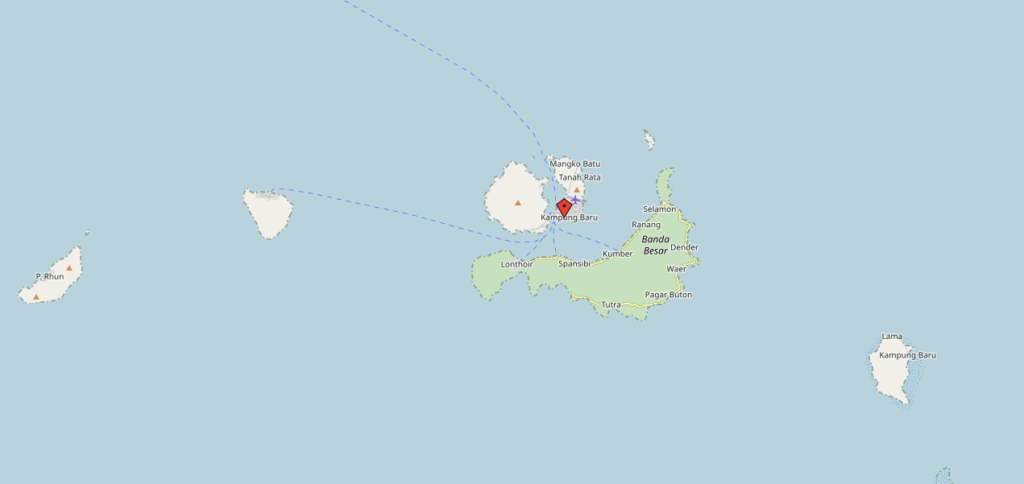
Start on the island of Ambon
Ambon is the capital of the Moluccas and is located on the island of Pulau Ambon of the same name. We flew from Jakarta. After about 3.5 hours, we reached the tropical island of Ambon, which looked fantastic with its green mountains and dense jungle. Pulau Ambon is not a vacation island. Despite the promising mountains with dense rainforest and beautiful beaches, it is merely a stopover for many tourists.

Highlights on Ambon
For us, it was only a short stop, but we still took an extra day to get a little impression. So we rented a scooter and drove to the west coast of Pulau Ambon. The city itself is chaotic, loud, and dirty. Once we were finally outside the city, the traffic quieted down, and the landscape and places became more worth seeing.
Pantai Natsepa Beach
Our first stop was Pantai Natsepa Beach. You should definitely visit this beach at low tide, because at high tide the water reaches the road and is no longer accessible. The beach is located in a bay with calm water, an overgrown rock wall, and a small coral reef that appears at low tide. We took a short walk there and watched small sea creatures in the remaining puddles. We also noticed a fisherman crouching among the coral, pulling something out of its crevices.
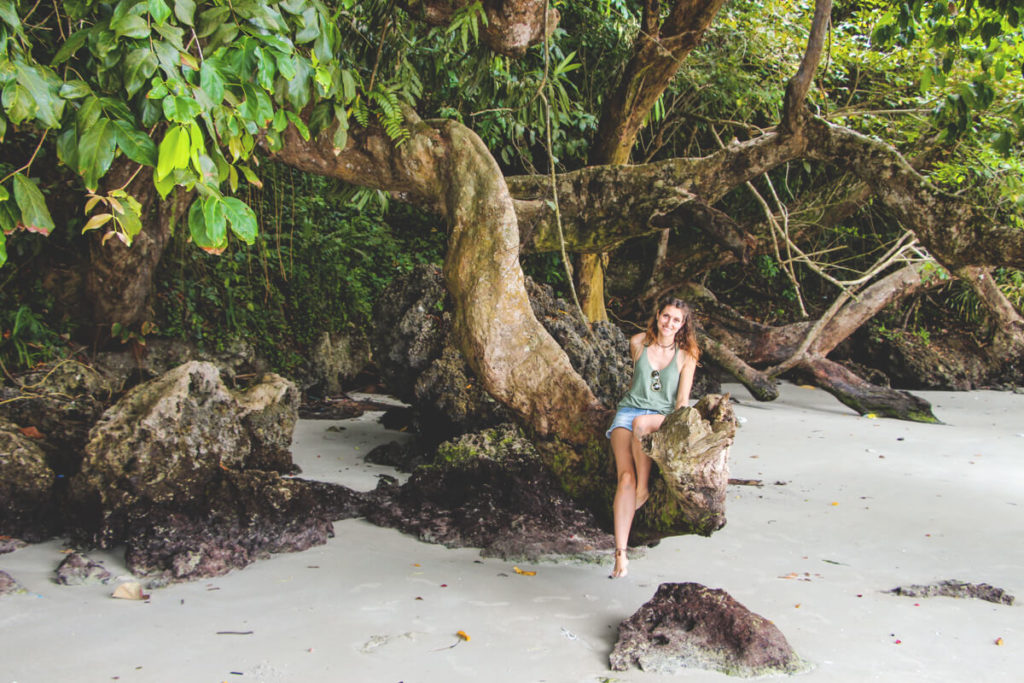
As we got closer, we saw him pulling thick, fat worms out of the wet ground. He proudly showed us his catch. Hmm… that’s not exactly appetizing. We soaked up some sun and enjoyed the tranquil atmosphere in the shallow water. Several simple warungs lined the roadside, where you can also try rujak, a Pulau Ambon specialty. A raw vegetable salad made with cucumber, sweet potato, papaya, star fruit, pineapple, mango, and peanut soy sauce.
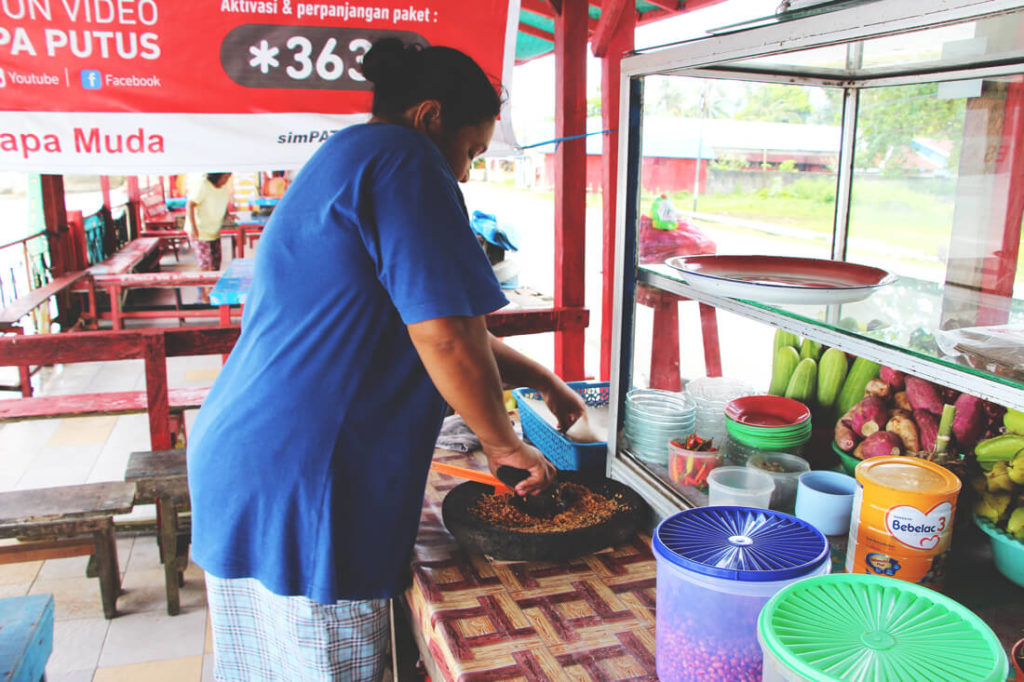
Pantai Liang Beach
Our journey continued westward to Pantai Liang Beach. The turquoise beach with its very light sand is only accessible at low tide. At high tide, the water reaches up to the small walls that separate the beach from a recreational area. The recreational area at Pantai Liang is freely accessible and is used, among other things, by youth groups spending their holidays there. While we were there, we were unlucky to find ourselves in the middle of a youth event, but it was also exciting to witness it.
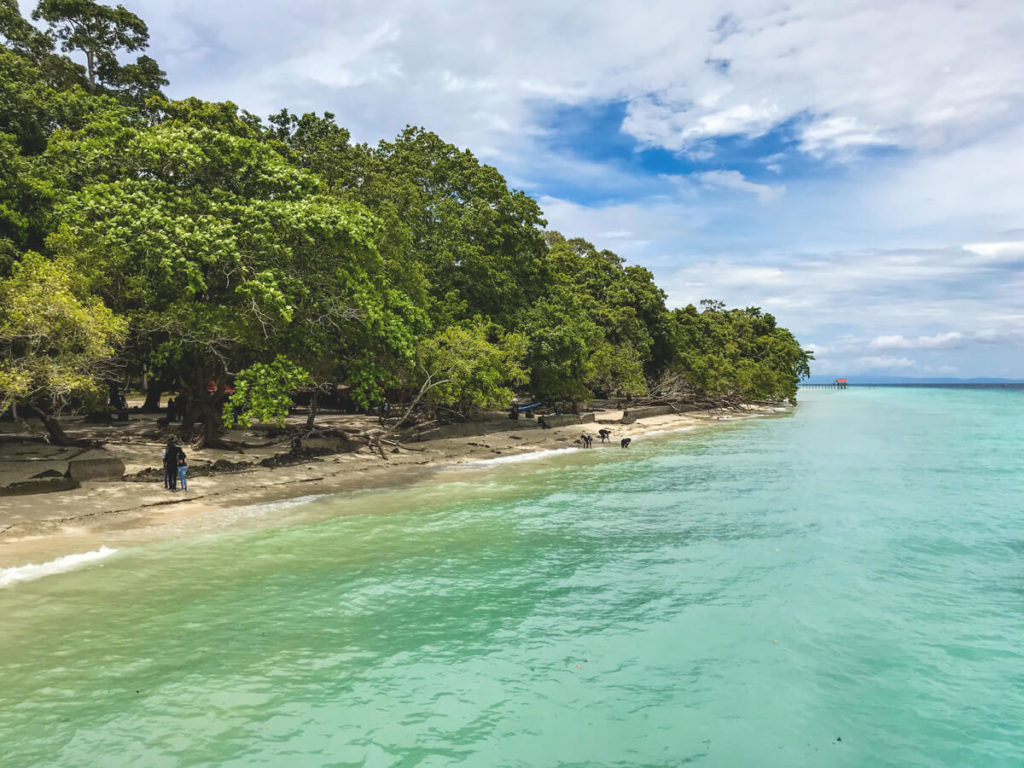
We only considered it bad luck because karaoke was being held at that time. Anyone familiar with Indonesian musical tastes, sound quality, and volume can now imagine what our ears had to endure. Bright, loud, different. But it was also funny and nice to see the teenagers having fun. Back to the beach: It’s very beautiful, with great colors, plenty of shade, and enough space for walking. From the beach, you can see the islands of Pulau Siam and Pulau Haruku.
The small village of Waii
Back on the scooter, on the way back, we stopped in the small village of Waai, where giant sacred eels were said to live. Hidden away and idyllic, we came to a small river. The locals looked at us strangely as we looked around. No eels in the water, just a few pretty fish. Then an Indonesian approached us and, without speaking a word of English, took us to a man who was already knee-deep in the water.

He explained to us that these eels were sacred and that their ancestors lived in them. They hid in a cave, and only when he put a piece of raw ice in the water did they slither out of the cave at lightning speed and retreat again. The sight took some getting used to, as there were so many slimy eels swarming tightly together in this cave, each one also rushing out of a small exit. We drove back to the hotel; it was already late afternoon, and we wanted to arrive in the chaotic city before daylight.
The Ferry Ride to Banda Neira
The next day, we went to the port in Tulehu to take the express ferry to Banda Neira. We bought the tickets directly at the port; we couldn’t pre-book them. Everything went smoothly, at first. After we had the tickets and made contact with other travelers, we finally left and were able to board the ferry. Indonesians love chaos, crowds, and tight spaces. So we found ourselves in a huge crowd and were slowly pushed into the boat. Typical for Indonesia.
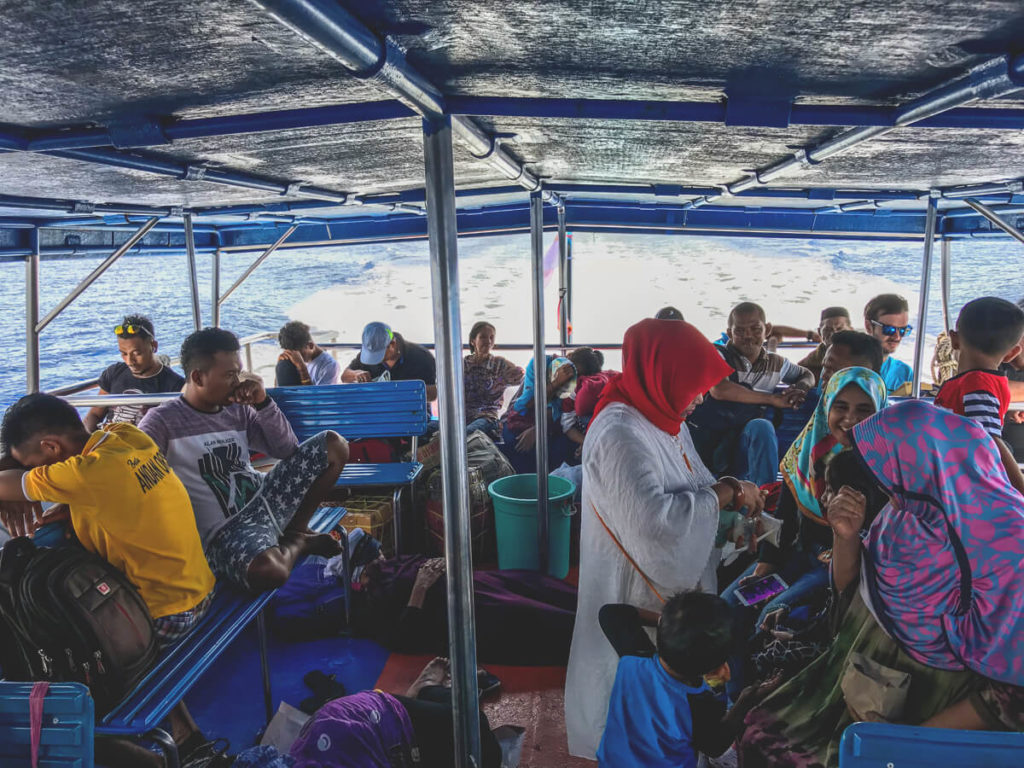
Chaos, crowds, and cramped conditions – typical!
We had the choice of sitting upstairs and outside, or downstairs in the air-conditioned room. We opted for the air-conditioned room, which had seats like those on a tour bus. A European woman who lived on Banda Neira sat in our row. The row was quite narrow but still quite comfortable. The air conditioning blasted ice-cold air, while more and more sweating people entered the room. There was supposed to be a festival on Banda Neira in the coming days, making it the perfect time to take the ferry…not.
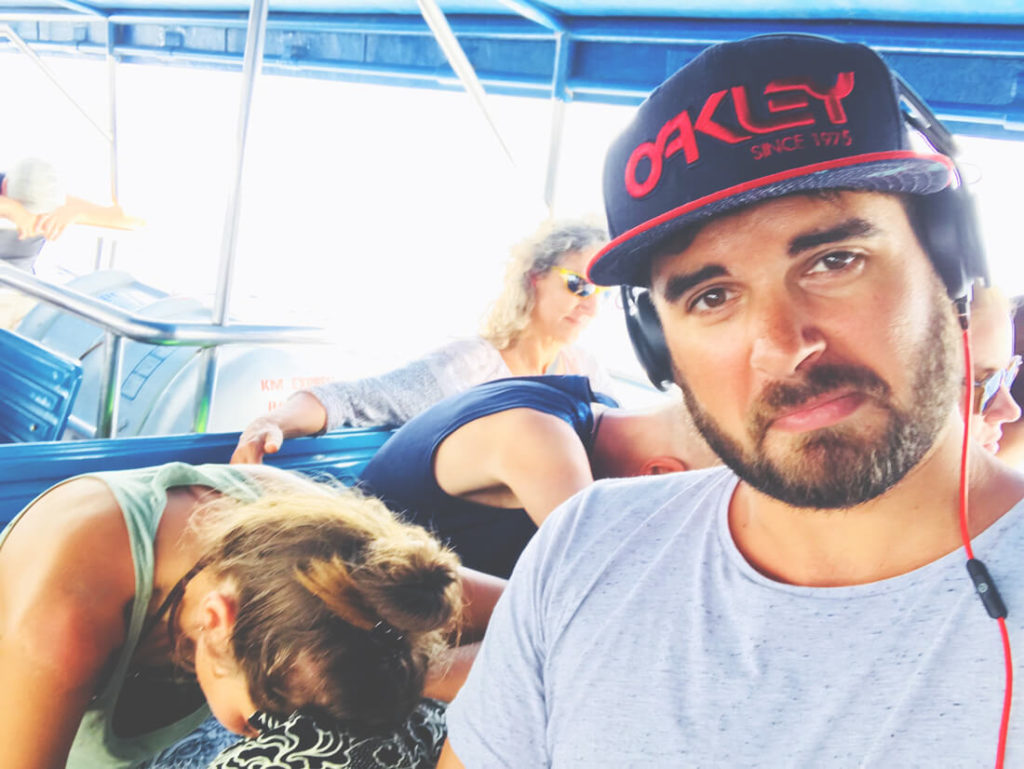
The locals pushed and stacked boxes like Tetris, suitcases were shifted over the seats and over heads, and more and more people crowded into the air-conditioned space. Our comfortable row of seats gradually became a trunk with all sorts of boxes in just as many shapes and sizes. We ourselves seemed to have become just some kind of luggage. I felt uneasy. I looked at the life jackets and the small hatch that led outside.
“There’s no way I’ll make it out of there if the worst comes to the worst.” My thoughts said goodbye.
Whale-Watching on the Ferry
Then suddenly, we were told we were changing ferries. We were supposed to move to a larger one. Thank goodness. Crowds of people and crates moved toward the exit and went directly onto a larger fast ferry. It was much bigger, and I was very relieved. We sat in first class. Two-seater seats, air conditioning, and space. Lots of space.
It took some time before we departed, so until then I went outside and watched the hustle and bustle. The loading never ended; they even transported a scooter. I stayed outside, made myself comfortable among the locals, and enjoyed the fresh air. I was lucky because I not only enjoyed delicious food, I even got to watch whales leaping out of the water. Magnificent.
Arrival on Banda Neira
There we were, in the middle of a tropical paradise. Calm, deep blue water and green mountains rising from the ocean, the shores of which were tinged with dark turquoise. Dense rainforest reached just above the crystal-clear water surface. One could only guess at what lay beneath. The Bandas consist of seven islands, three of which are very close to one another. It seemed as if one could swim from island to island. The largest island is Banda Besar, which is largely covered with forest. Nutmeg, kenari nuts, and cloves are also cultivated on Pulau Banda.

Opposite lie the islands of Pulau Neira and Banda Api. Banda Api is an island that is also home to the active volcano of the same name. It last erupted in May 1988. Three lava flows flowed into the sea, forming a new underwater landscape. Known to divers as the “lava flow,” this is clearly visible underwater. Although Pulau Neira is not the largest island in terms of area, it is considered the main island. Large areas are densely populated; the port for ferries and merchant ships, as well as the airport, are located here.
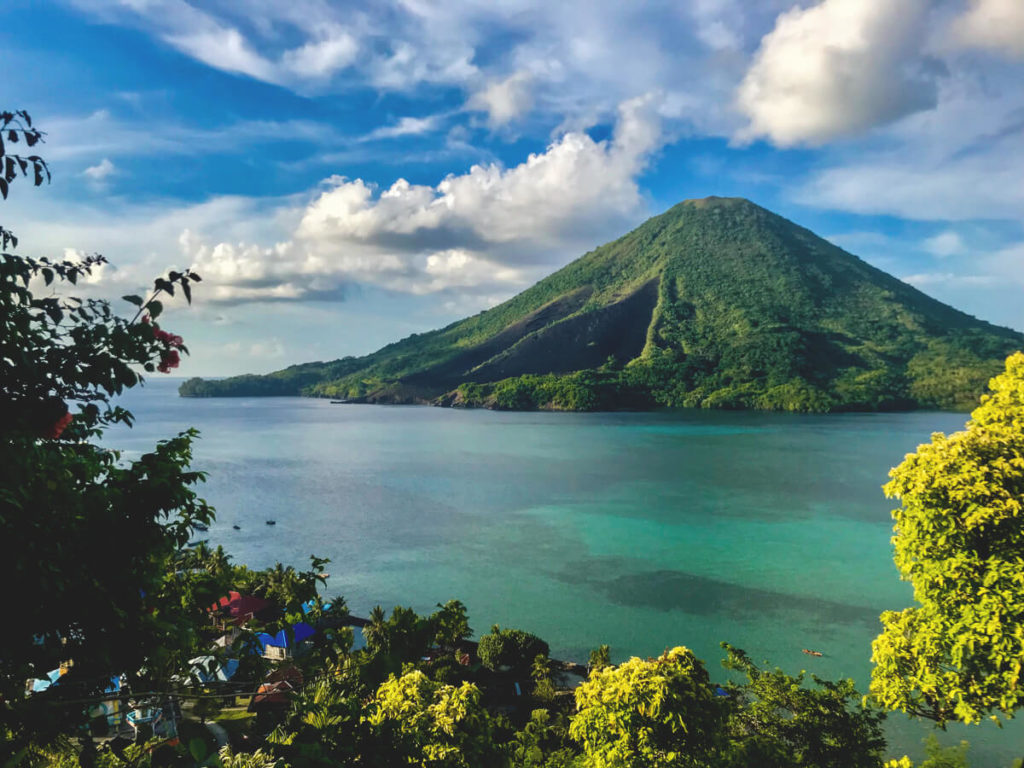
The Bandas – Back in the Day
In the 17th century, Europeans discovered this small archipelago and exported the exotic spices. These strange spices were worth their weight in gold in Europe at the time. It’s no wonder, then, that greedy humanity completely conquered these islands. The Bandanese were killed or enslaved. Some of them fled.
The Europeans fought among themselves, and the Bandas were ruled by the Portuguese, Dutch, and English. But the Dutch had the greatest influence on the Bandas and the Moluccas. The original population no longer existed. Ancient traditions were lost, and new slaves were brought from other Indonesian islands. Thus, a new culture developed over the centuries.
The Bandas – Today
Banda Neira has the most accommodations in the entire archipelago. Several diving centers have also settled there. Life is bustling near the harbor. Several restaurants, shops, and the market attract people. As you walk through the streets of Banda Neira, you’ll recognize a mix of cultures. Not only do old colonial-style houses stand next to small, simple buildings, but the Chinese have also settled on Banda Neira.
The Bandas are a melting pot of cultures, shaped by their history. In the town center of Banda Neira you can immerse yourself in the history of this spice island and visit Fort Nassau and Fort Belgica, built by the Dutch. Under the hot sun, this tropical island has a European feel.

Untouched Underwater World
The Bandas are a popular destination among divers, yet uncrowded due to their location. Some dive safaris roam the Banda Sea and stop off Banda Neira. The reefs are still very well preserved and pristine. They attract large fish and whales, and the biodiversity is incredible. Schools of hammerhead sharks circle the islands, mandarin fish glow brightly on the shore, and dolphins leap through the water.
We’ve never seen so many different types of fish and corals, not to mention the size. What was also unforgettable for us was observing how tame the fish were. Even while snorkeling, they came so incredibly close to us like nowhere else. They looked us in the eye, swam with us, and welcomed us into their schools.
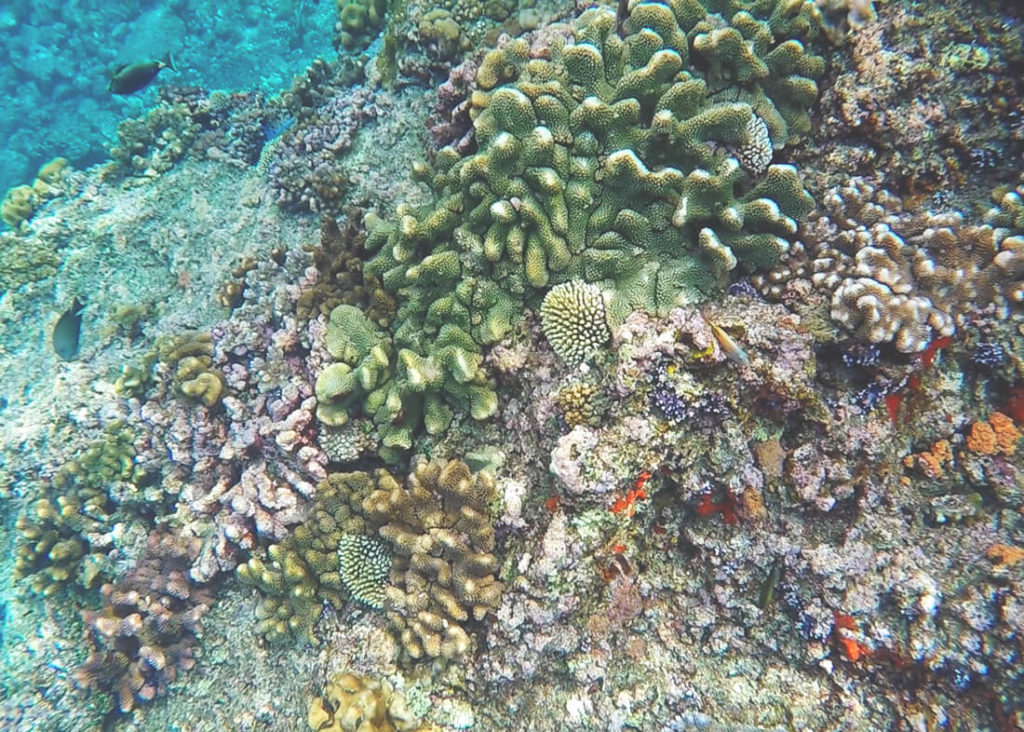
We will also never forget the following experience. I have no idea how this can be explained biologically, but we interpreted it as positive behavior: While snorkeling, a yellow parrotfish swam beneath us. It was alone and repeatedly approached us, observing us curiously. We watched back. Then it suddenly started dancing wildly and flailing its fins.
It was like an excited puppy wagging its tail like crazy. Whether it was mating, feeling threatened, or simply happy about its discovery of these strange, peaceful creatures… Who knows, we were delighted and will never forget it. We brought home so many unforgettable moments. The underwater world there was simply unbelievably beautiful.
Best Time to Dive
Diving tours are mainly offered on the Bandas. As a snorkeler, I went along with the divers and jumped into the water alone. Since I felt somewhat uncomfortable doing this, I paid an extra fee at the diving school for a dive guide to go snorkeling with me. Best Time to Dive: In spring, the water is very clear, with visibility of 50 meters possible. In autumn, the water is very rich in nutrients, which attracts large fish from the depths. Visibility was a bit poor (but still very good).
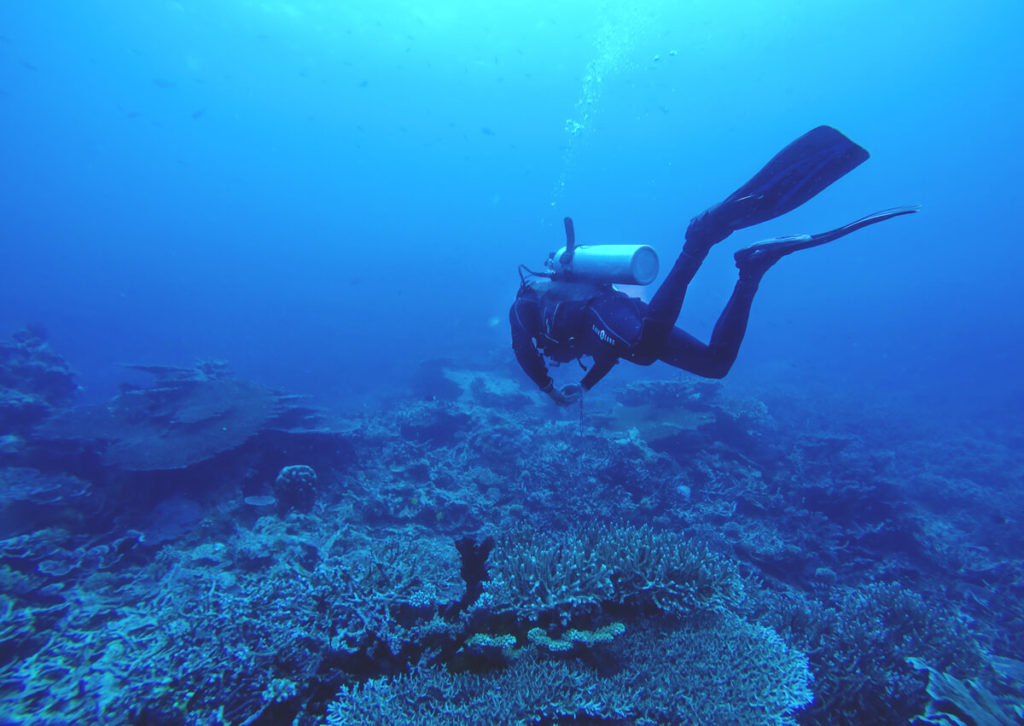
Our Dive Center, Dive Bluemotion
We visited the Dive Bluemotion dive center. It is run by Tuta, a German dive instructor who operates his dive center according to German standards. Dive Bluemotion is equipped with two dive boats, which offer full-day trips to various dive sites. The trips are scheduled daily depending on the weather, and radio contact with the center is available at all times. The dive center is located directly on the sea, which is separated from the land by a small harbor wall. From the on-site pier, you already have a magnificent view of the underwater world.

Schools of garfish hunt through the water, small clownfish zip around the wall, and other colorful fish swim within sight. Just a few fin strokes from the pier, countless mandarin fish frolic in the neighboring harbor wall at sunset. At night, we shone a flashlight into the water from the pier and observed the nocturnal creatures. The flourishing life on the Bandas.

The dive center also includes marine biologist Mareike, who has been researching the reefs for years and, together with Tuta, has a major ecological impact on the Bandas. They not only protect the oceans independently, they also educate the locals. With the Luminocean Foundation, they try to involve local students in marine biology research. The dive center also includes the Hotel Baba Lagoon, where you can stay. There are also other good accommodations on the island.
Excursions and Tours
In addition to a tour of Pulau Neira, you can also visit the other islands. Pulau Ai and Pulau Run are quite far away. An overnight trip is worthwhile, as the boats travel quite slowly. We didn’t visit this island ourselves, but we’ve been told it’s worth it. To get to the islands, find a fisherman at the harbor who will take you there. Many cater to tourists and will take you wherever you want to go. You can rent boats for the whole day or just for one leg.
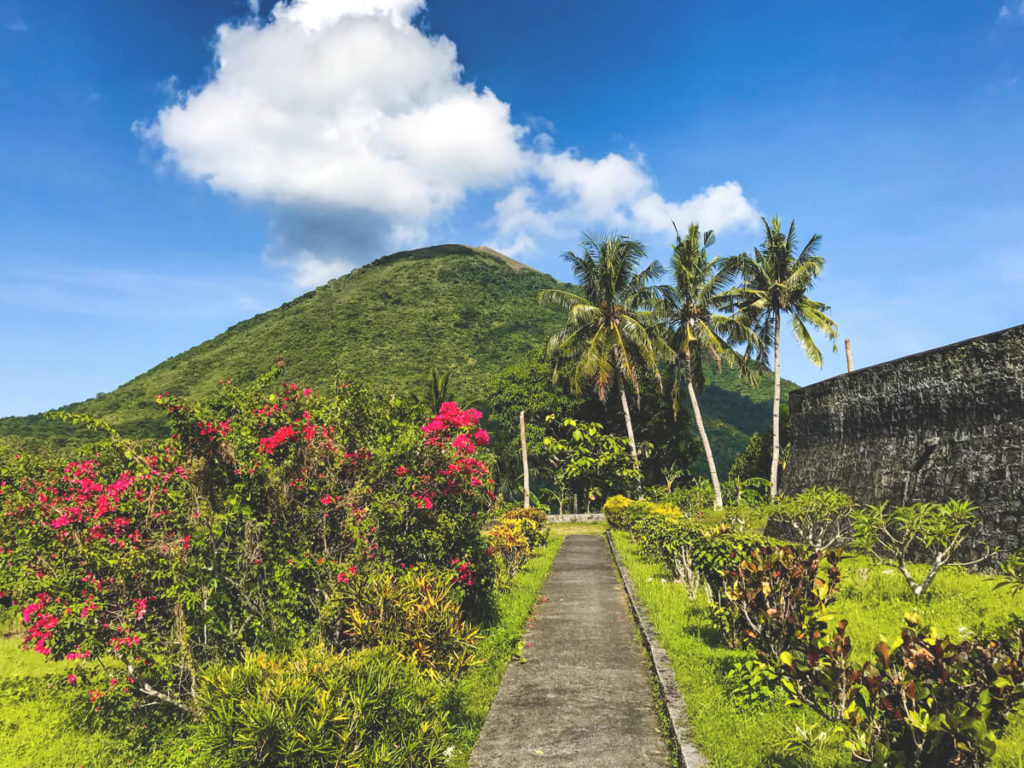
Excursion to Pulau Hatta
We visited Pulau Hatta for this trip. This island is about 1.5 hours by boat from Banda Neira. You can stay overnight in a beach hut on the island or return in the evening. We rented a boat for the whole day and set off. On the way to Pulau Hatta, we encountered a school of dolphins. Our boatman made our first stop at the edge of the reef so we could go snorkeling.
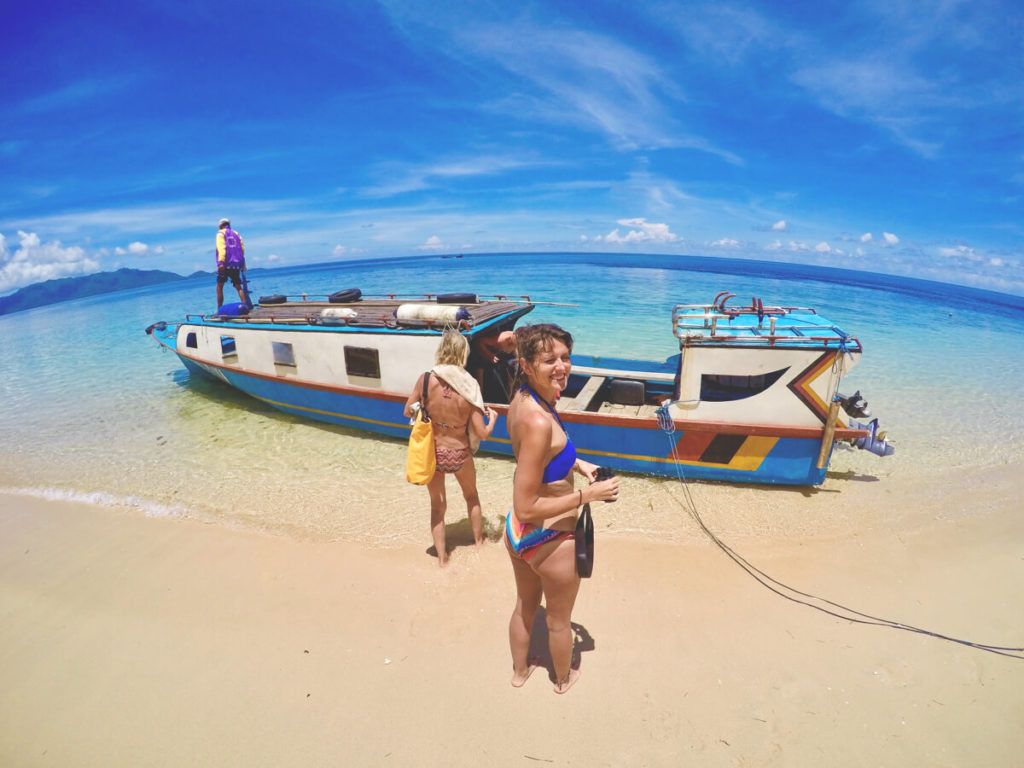
He always maintained eye contact with us and pushed his boat behind us with the help of a stick. He then took us to Pulau Hatta Beach, where he docked and waited for us in the shade all day. The island has a beautiful, light-sand beach and a reef that you can reach from the beach. The island is perfect for lounging. Perfect.
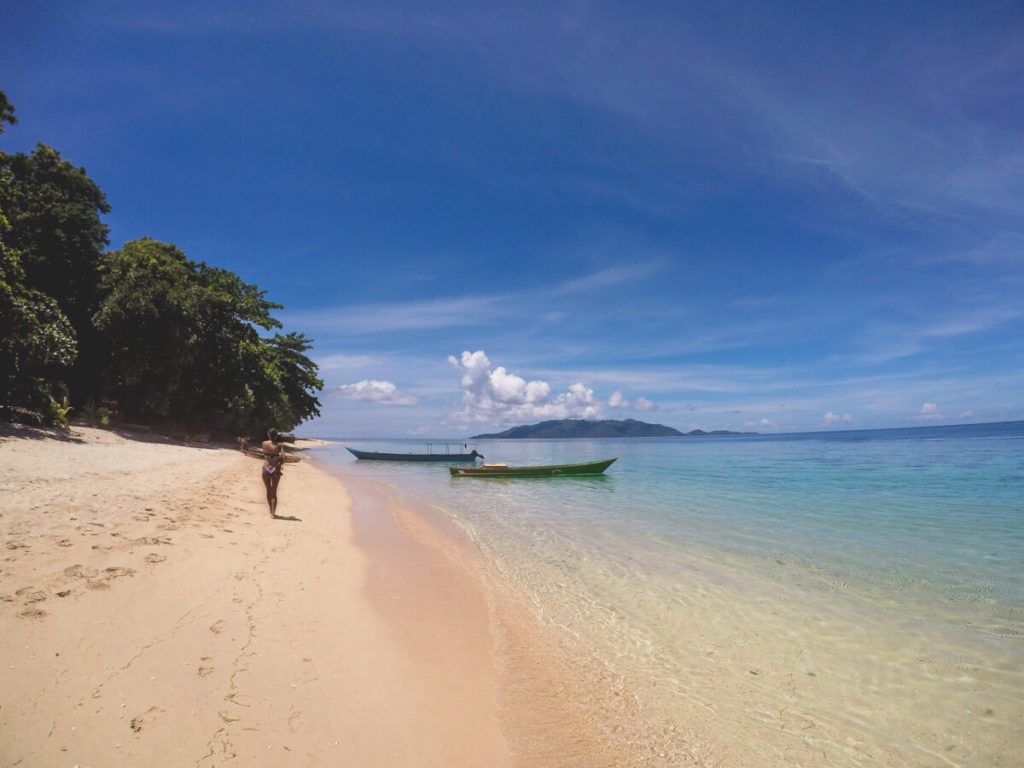
Spice tour with many highlights
The next day, we booked a Spice Island tour with Azwar. He runs the Spice Island Cafe and also works occasionally for the Dive Bluemotion dive center. We first went snorkeling to three or four different spots by boat. We also really wanted to go snorkeling. Afterwards, we circumnavigated the volcanic island of Banda Api by boat. Beautiful cliffs, turquoise water, and caves with fruit bats awaited us. We got a close-up look at the black lava flow on the south side of the volcano, which was very impressive.
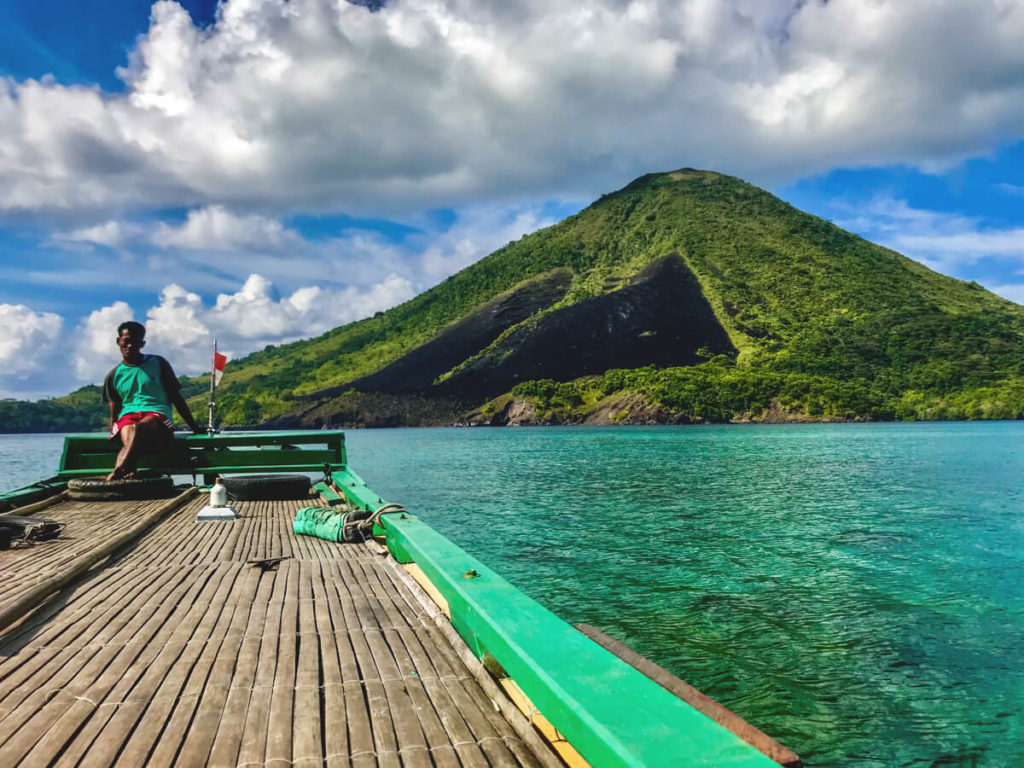
Then we docked on Banda Besar, the largest of the Bandas and home to the nutmeg trees. We first walked through a small village to climb uphill to the nutmeg trees, which stood in the shade of the giant kenari trees. We were able to watch them being harvested and peeled. Cloves are also grown and cinnamon bark is harvested there. All these spices can be found in the local dishes and coffees.
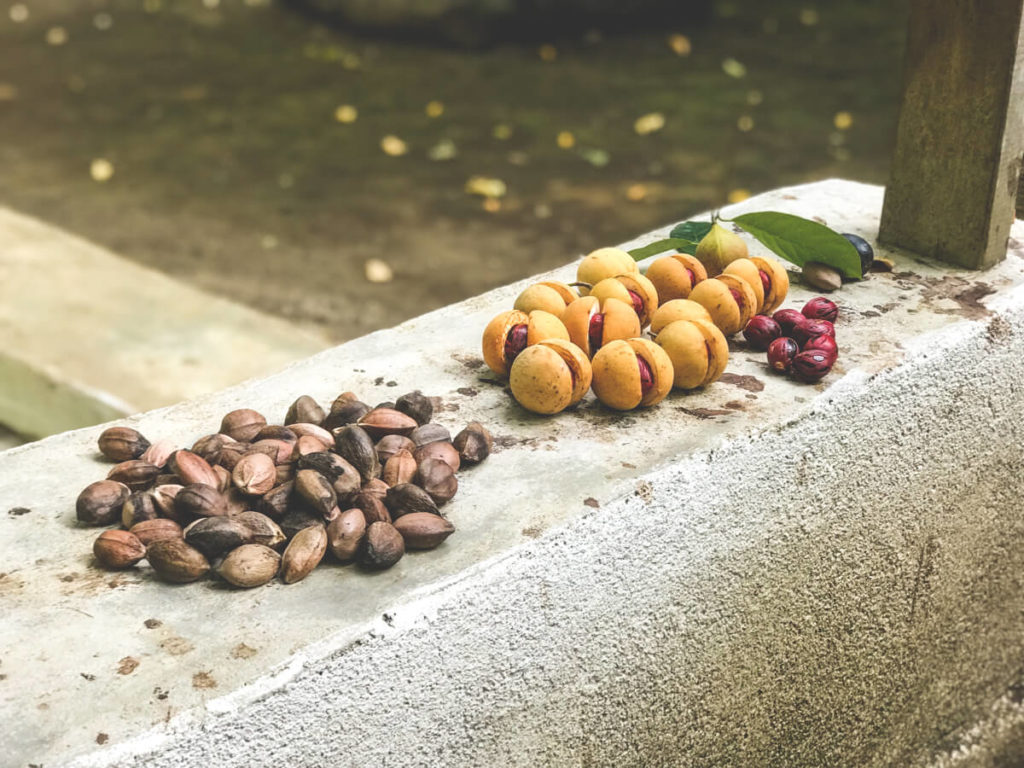
You can also climb the very visible Banda Api volcano. We didn’t do this because the tour is supposedly very strenuous, and in the heat, you had to hurry to reach the summit in time. Therefore, you would have to leave for Banda Api in the dark early in the morning. We met tourists who had climbed this volcano. They were experienced hikers and confirmed the difficulty level.
Accommodation on Banda Neira
There are various accommodations on Banda Neira and the other islands, which you can find on popular online platforms. Most are located on Banda Neira. We stayed at the Baba Lagoon Hotel, which belongs to the Dive Bluemotion dive center and is located near the harbor. This hotel is located directly on the sea with its own jetty and direct views of the beautiful Banda Api volcano.

The Baba Lagoon has several rooms, some of which have been renovated (perhaps all of them by now), a restaurant where breakfast is served and divers meet. There you can also browse specialist literature or relax on the beanbags on the lawn. At night, fruit bats flutter through the palm trees.
You can jump into the water with snorkel and fins and explore the underwater area. Many mandarin fish frolic nearby at sunset. Also of interest is the yellow buoy, full of plants, animals, and sea squirts. A yellow frogfish is said to be spotted there occasionally.
Getting to Banda Neira
You can travel from Ambon with the Bahari Express fast ferry. This departs from Tulehu on Tuesdays and Saturdays at 9 a.m. and takes about 6 to 7 hours. It also returns on Sundays and Wednesdays at 9 a.m. Tickets are available directly at the port. These cost between 450,000 and 615,000 IDR (approximately €30 to €40). Large ferries also travel to Banda Neira. These take much longer, but are cheaper.
They take between 8 and 14 hours, depending on the route. It’s best to check the ferry website for details. Traveling by small plane from Ambon is also possible, but it’s unreliable and only allows limited luggage. The airline changes from year to year, so we recommend checking with your accommodation.
